This document discusses XML and provides an introduction and overview. It defines what a markup language is, describes the history and features of SGML and limitations of HTML. XML is presented as being extensible and overcoming drawbacks of HTML. The key steps to create an XML document are outlined, including the XML declaration, root element, defining elements and attributes, and verifying the document structure. Components of an XML document like entities, character data types, and DOCTYPE declarations are also summarized.



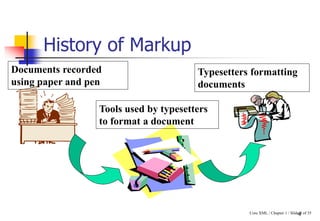


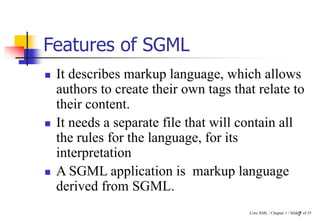


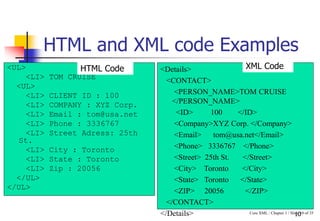
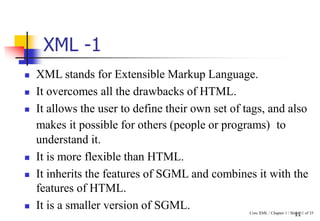
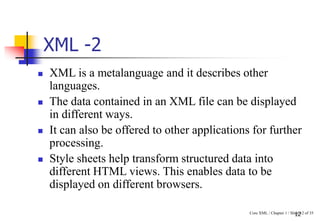
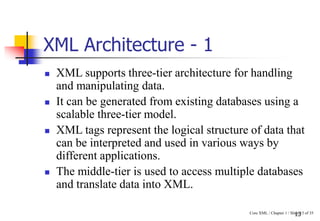
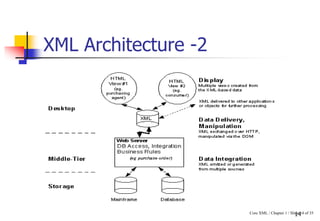



















![Core XML / Chapter 1 / Slide 34 of 3534
CDATA
It means character data.
It will not be parsed by the Parser.
CDATA are used to make it convenient to include
large blocks of special characters.
The character string ]]> is not allowed within a
CDATA block as it will signal the end of the CDATA
block.
<SAMPLE>
<![CDATA[<DOCUMENT>
<NAME>TOM CRUISE</NAME>
<EMAIL>tom@usa.com</EMAIL>
</DOCUMENT>]]>
</SAMPLE>
Example](https://image.slidesharecdn.com/tp1-101110192118-phpapp01/85/Introduction-to-XML-34-320.jpg)


![Core XML / Chapter 1 / Slide 37 of 3537
The DOCTYPE declarations
The <!DOCTYPE [..]> declaration follows the XML
declaration in an XML document.
Syntax
<?xml version="1.0"?>
<!DOCTYPE myDoc [
...declare the entities here....
<myDoc>
...body of the document....
</myDoc>
Example
<!DOCTYPE CUSTOMERS [
<!ENTITY firstFloor "15 Downing St Floor 1">
<!ENTITY secondFloor "15 Downing St Floor 2">
<!ENTITY thirdFloor "15 Downing St Floor 3">
]>](https://image.slidesharecdn.com/tp1-101110192118-phpapp01/85/Introduction-to-XML-37-320.jpg)



![Core XML / Chapter 1 / Slide 41 of 3541
Summary-3
Entities are used to avoid typing long pieces of text repeatedly
in a document. The two types of entities are:
General entities
Parameter entities
The <!DOCTYPE […]> declaration follows the XML
declaration in an XML document.
An attribute gives information about an element](https://image.slidesharecdn.com/tp1-101110192118-phpapp01/85/Introduction-to-XML-41-320.jpg)